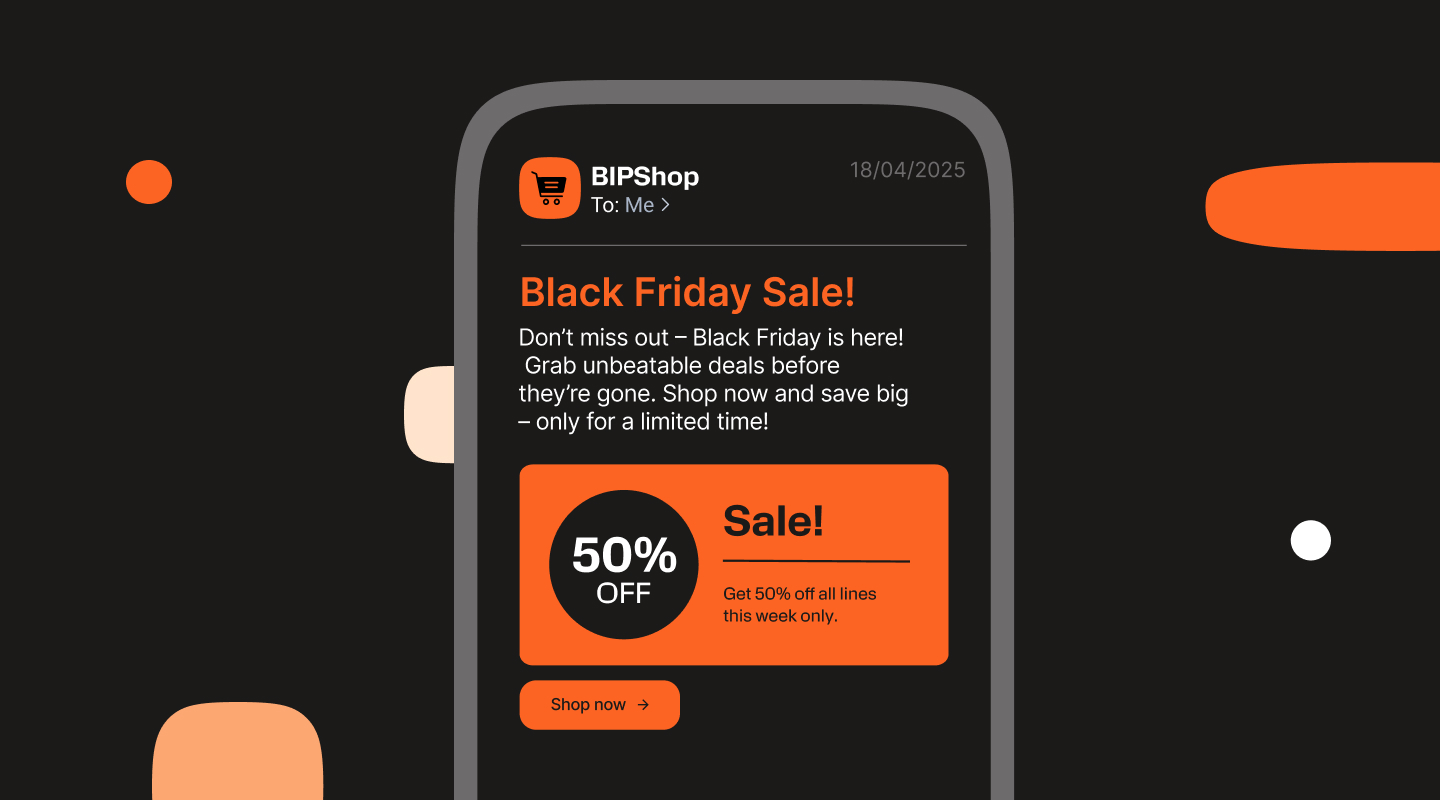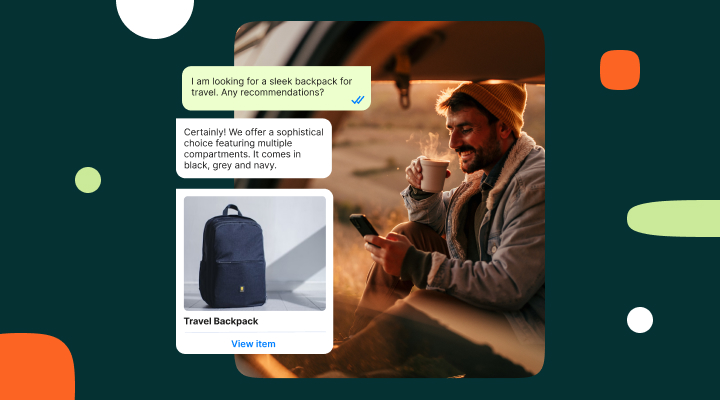Singles’ Day trends 2025: Key insights for eCommerce success
Discover the top Singles’ Day trends for 2025, reshaping global eCommerce and customer engagement. Learn how AI, personalization, and omnichannel strategies are driving the biggest shopping day in the world.

Singles’ Day started as an Anti-Valentine’s Day, but it has since evolved into a global phenomenon that surpasses all others in scale. While Prime Day, Black Friday, and Cyber Monday dominate headlines in the United States, Singles’ Day consistently outpaces them all. What began as a celebration for single people has grown into the world’s most influential shopping festival and a clear indicator of where eCommerce is headed.
What is Singles’ Day and why does it matter?
Singles’ Day, also known as Double 11, is a shopping event that originated in China in the 1990s. Originally called Bachelor Day, the date 11/11 was chosen because the four ones resemble individuals standing side by side. What began as a playful day for young people to celebrate their single status has since evolved into a cultural and retail phenomenon.
The event gained momentum in 2009 when the Alibaba Group recognized its potential as a shopping holiday. The first official Singles’ Day sales event had just 27 brands, generating $7.8 million USD (50 million yuan) in gross merchandise volume (GMV), just a fraction of what the event would later become.
Fast forward to 2021, and Alibaba’s GMV had soared to an all-time high of $84.54 billion USD in just 24 hours. That’s an increase of more than 10,000x in 12 years, a 1,083,746% growth from the original event. By 2023, Alibaba no longer disclosed its GMV, continuing the trend from the previous year. The company reported that sales were “in line with 2022,” with analysts estimating 2% year-over-year growth.
To put this into perspective, in 2021 alone, Chinese consumers on Alibaba’s platforms spent over $84 billion in a single day, nearly 2.5 times more than the major U.S. holiday sales events combined.
Key stats from Singles’ Day in 2024
- 1.44 trillion yuan (approximately $203.6 billion) number of Singles’ Day transactions
- 27% year-on-year increase
- JD.com highlighted a 20%+ year-on-year increase in shoppers
- 100 million+ products were on offer
- 300,000+ participating brands
- 35 million+ new products introduced
- Over 60 million hours of livestreaming watched
- Electronics, home appliances, skincare, and personal hygiene products ranked among the most popular purchasing categories
From a student celebration to the biggest shopping event
Singles Day’s roots trace back to universities, particularly Nanjing University, where students created the holiday to celebrate being single.
Today, Singles’ Day attracts not only single people but a wide demographic of online shopping enthusiasts worldwide. It’s a day in China that has grown to include international markets, especially in regions like Malaysia, Indonesia, South Korea, and the Philippines.
Day celebrates individuality, but it has also become a symbol of innovation and customer-centric retail strategies.
Why Singles’ Day is bigger than Prime Day or Black Friday
While Prime Day is popular in the United States, Singles’ Day has outpaced every other shopping event globally. The scale of transactions, engagement, and technological adoption during this sales period is unparalleled.
In just 24 hours, the numbers are staggering:
- $157 billion USD in 2022, even amid global economic challenges.
- Billions of interactions across apps, websites, and messaging platforms.
- A surge in cross-border purchases, with international brands competing for attention alongside local Chinese retailers.
This level of activity has pushed retailers to experiment with new technologies, from AI-powered recommendations to immersive social commerce.
The trends defining Singles’ Day success
To keep up with the biggest shopping day in the world, leading retailers and eventually eCommerce experts study emerging trends that drive success. Four major strategies stand out in 2025.
1. AI-powered customer service and agentic AI
The sheer volume of Singles’ Day sales makes fast, accurate customer service critical. Brands are increasingly leveraging agentic AI and conversational chatbots to manage interactions at scale. With Retrieval Augmented Generation (RAG AI), chatbots can pull accurate, brand-aligned information directly from a company’s knowledge base, ensuring precise and reliable responses.
According to MIT Technology Review:
- 90% of brands report faster complaint resolution through AI.
- 80% process higher call and chat volumes without additional staff.
Unlike rule-based bots, these intelligent assistants can manage personalized recommendations, order tracking, and real-time support during the sales period, making them a cornerstone of the modern online shopping experience.
2. Hyper-personalized product recommendations
Consumers have grown weary of generic marketing. During peak events like Singles’ Day, Black Friday, Cyber Monday, and Prime Day, personalized recommendations are no longer a nice-to-have; they’re a necessity.
AI-driven personalization enables brands to analyze browsing behavior, past purchases, and even conversational data to serve up real-time suggestions. According to McKinsey, companies using personalization generate 40% more revenue than competitors that don’t.
Chat apps like WhatsApp and Messenger are now becoming personalized storefronts, where AI-powered bots present curated product catalogs and exclusive offers to keep Chinese consumers and global shoppers engaged.
3. Expanding payment methods for seamless checkout
The modern shopping day in the world needs frictionless transactions. Cart abandonment is a constant challenge, especially during high-traffic sales periods.
To combat this, brands are diversifying payment options:
This variety not only appeals to single people and younger consumers but also drives conversion rates by removing unnecessary barriers in the buying process.
4. Conversational commerce and omnichannel experiences
Conversational commerce, shopping through messaging platforms, has seen explosive growth during Singles’ Day. Brands use messaging apps to launch limited-time offers, handle support, and facilitate payments directly within the chat.
The future: AI and universities driving innovation
Interestingly, universities and eventually tech incubators are playing a larger role in shaping the future of eCommerce. Institutions like Nanjing University not only helped create the cultural roots of National Singles Day but are now studying its evolution to understand consumer psychology and technological innovation.
Agentic AI, RAG AI, and data-driven omnichannel strategies are enabling brands to transform sales periods into meaningful customer engagement opportunities.
For global brands, this shows that simply replicating the Black Friday and Cyber Monday playbook isn’t enough. Success lies in crafting unique, engaging, and highly interactive online shopping experiences.
Singles’ Day 2025 and beyond
As retailers gear up for 2025 and beyond, here’s how to dominate the next shopping event:
- Integrate AI-powered chatbots for instant, personalized customer support.
- Invest in omnichannel messaging, including WhatsApp, RCS, and Apple Messages for Business.
- Optimize payment methods, with BNPL and mobile-first solutions.
- Experiment with hyper-personalization, using AI-driven recommendation engines.
- Analyze customer behavior in real time to refine offers and reduce cart abandonment.
Treat every sales period like Singles’ Day, where every interaction is personalized, every channel is connected, and every purchase feels effortless.
FAQs
Singles’ Day, also known as Double 11, started in China as a celebration for single people. It was originally called Bachelor Day and began in the 1990s at Nanjing University before being transformed into a massive shopping event by Alibaba Group in 2009.
While Prime Day, Black Friday, and Cyber Monday are popular in the United States, Singles’ Day generates significantly higher sales in a 24-hour period and leads in areas like live commerce, AI adoption, and mobile-first engagement.
Originally focused on single people in China, Singles’ Day now attracts a global audience, including younger consumers, students, and online shoppers across Asia-Pacific and beyond.
The main Singles’ Day trends in 2025 include agentic AI for customer service, personalized product recommendations, expanded payment options like BNPL, and omnichannel conversational commerce strategies.
Offering flexible payment options, especially mobile wallets and Buy Now, Pay Later (BNPL), helps reduce cart abandonment and improves conversion rates, particularly among Gen Z and Millennials.
Conversational commerce allows customers to discover, shop, and get support through messaging apps like WhatsApp, Apple Messages, and RCS. It improves engagement and shortens the path to purchase during high-traffic sales periods.
Brands can succeed on Singles’ Day by integrating agentic AI, unifying channels, optimizing payment flows, and using real-time analytics to personalize offers. Starting early and testing campaigns before November 11 is key.



















